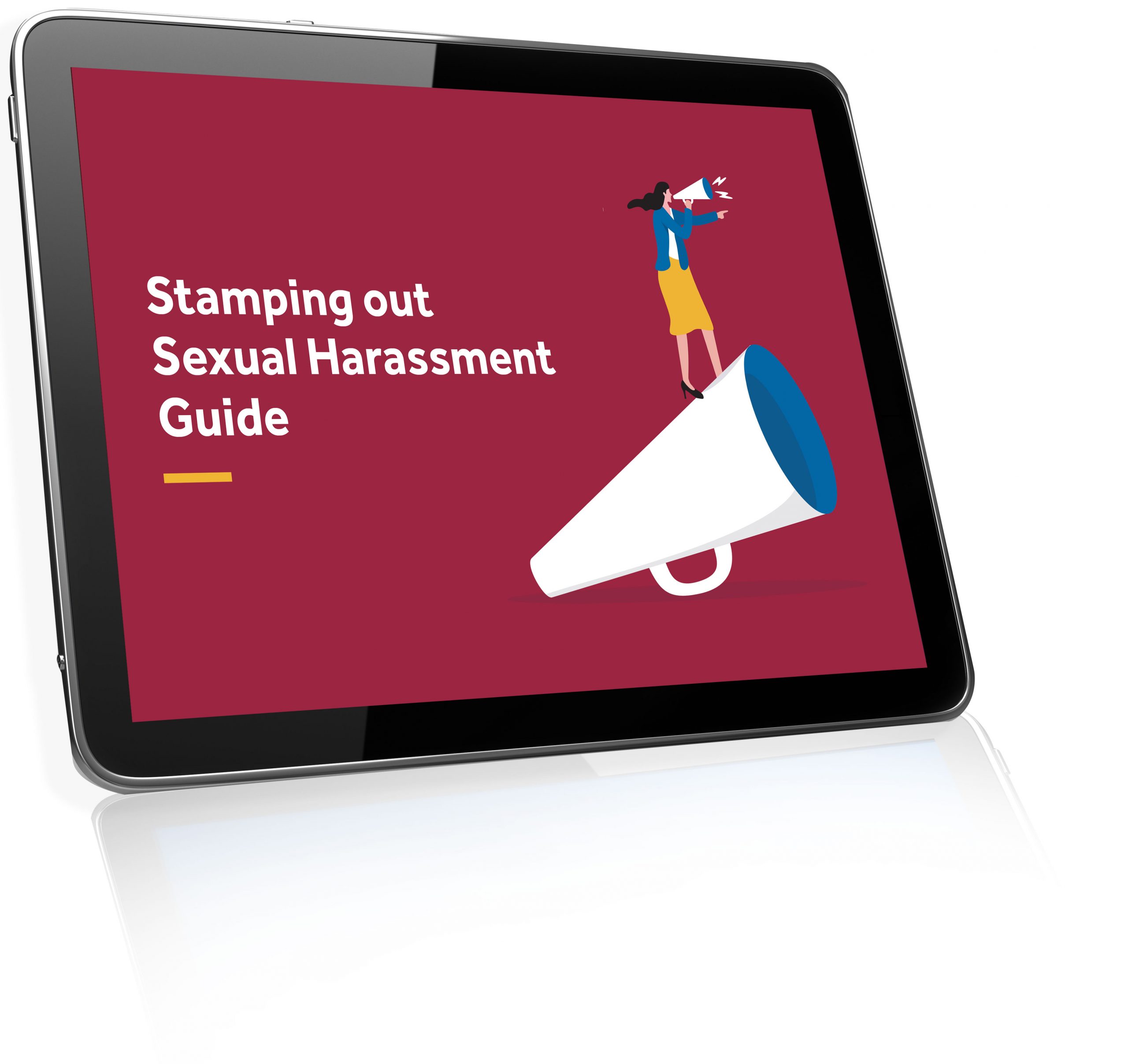
Sexual harassment is a significant issue in Australian workplaces that affects people across all levels and industries. Two in five women and one in four men have experienced sexual harassment in the workplace in the past five years. Australia also lags behind other countries in preventing and responding to sexual harassment.
Harassment in the workplace has long been brushed under or ignored due to its complicated nature and circumstances. In March 2020, the Australian Human rights commission released Respect@Work, the final report of the National Inquiry into Sexual Harassment in the Australian workplaces. The goal of the inquiry was to examine the nature, prevalence, and drivers of sexual harassment in Australian workplaces and measures to address and prevent it. What this report does, is explain clearly that sexual harassment is not a women’s issue or gender specific issue. It is a societal and cultural issue which every Australian office and business can address.
Definition
Most people who experience sexual harassment never report it. It is combination of fear and lack of clear understanding of what constitutes as sexual harassment.
18% of people who said they had not been sexually harassed based on the legal definition of sexual harassment went on to report sexual harassment behaviours.
The limited understanding of what constitutes sexual harassment has serious ramifications for employers and staff. It further perpetuates a misunderstanding and confusion about obligations and responsibilities.
Under the Sex Discrimination Act 1984, sexual harassment is:
any unwelcome sexual advance
unwelcome request for sexual favours, or
other unwelcome conduct of a sexual nature in relation to the person harassed
in circumstances where a reasonable person, having regard to all the circumstances, would have anticipated the possibility that the person harassed would be offended, humiliated or intimidated. The Sex Discrimination Act makes sexual harassment unlawful in certain areas of public life, including employment.
It can be between employees or managers, and it can also involve customers.
Employers have an obligation to protect their workers from hazards, and sexual harassment is a serious work health and safety (WHS) hazard that can cause physical or psychological harm.
Workplace sexual harassment
Sexual harassment can happen:
at the worker’s usual workplace
where a worker is working remotely, including if a person’s workplace is their home in a place where the worker is undertaking work at a different location (such as a client’s home)
where the worker is engaging in a work-related activity such as conferences, training, work trips, work-related corporate events or if you host a work-related social activity like a Christmas party, or
by phone, email or online (such as through social media platforms)

Stamping Out Sexual Harassment
Prevent sexual harassment in your workplace this festive season!
Gender and sexual harassment
Sexual harassment is a form of gendered violence. Gendered violence is any behaviour directed at any person or that affects a person because of their sex, gender or sexual orientation or because they do not adhere to socially prescribed gender roles, thus creating a risk to health and safety. For example, violence towards someone because they identify as lesbian or gay is a form of gendered violence.
While sexual harassment can be experienced by anyone, there are particular groups of people who are more likely to experience it. The Australian Human Rights Commission found that while both men and women experience sexual harassment, women are more prone to experiencing it and being negatively impacted by unwelcome sexual behaviour.
Factors that can increase the likelihood of a worker experiencing sexual harassment or unwelcome sexual behaviour include:
workers who identify as lesbian, gay, bisexual, transgender, intersex, queer, or asexual (LGBTIQA+)
Aboriginal or Torres Strait Islander workers
workers under 30 years of age
workers with a disability
workers from culturally and linguistically diverse backgrounds
migrant workers or workers holding temporary visas
people in insecure working arrangements e.g., casual, part-time work, or labour
Small business and sexual harassment
Small businesses face particular challenges in understanding the complexity of sexual harassment. The small size of the workplace and the high degree of informality can increase the risk of sexual harassment. It also increases the potential of informal and personal interactions, physical contact, and other forms of communication which lead to unwanted advances. Small businesses lack the manpower, knowledge, and resources to handle complaints.
An industry-based approach and understanding can help employers and business owners prevent sexual harassment in the office. Certain industries have cultures and environments that can lead to to unwanted sexual behaviour or sexual harassment.
A recent report found that 60% of hospitality staff have experienced sexual harassment. While customers were the main perpetrators, 42% of respondents said the abuse came from their managers or supervisors.
51% of women in the building and construction industry have experienced sexual harassment at work. The Australian building and construction industry has long been one with a masculine set of values and a misogynistic culture making women feel unsafe and uncomfortable at the job. Building and construction is also the most male dominated industry in Australia, with only 12% of the workforce as female. The gender imbalances increase the risk of sexual harassment. Women on construction sites are subjected to sexually explicit slurs, offensive graffiti, and the odd suggestive comment.
Impact of sexual harassment in the workplace
People who experience sexual harassment or unwanted sexual behaviour also fear complaining as this may cause repercussions on their reputation, their career, and their relationships. The current system for addressing workplace sexual harassment in Australia is complex and confusing for victims and employers. It is reactive, complaints-based and puts a heavy burden on individuals to make a complaint within a specific time period.
Workplace sexual harassment was estimated to cost the Australian economy approximately $3.8 billion in 2018. Lost productivity ($2.6 billion) represented the largest component of the estimated economic cost of workplace sexual harassment, with the largest share of this borne by employers and business owners.
Workplace sexual harassment affects productivity and health and wellbeing of employees. Other impacts include:
negative impact on employment
financial consequences (for the individual and the business)
staff turnover
negative impact on company culture
reputational damage
negative impact on mental health

Did You Know?
The Australian Government has launched the Respect@Work website, which aims to support employers in preventing workplace sexual harassment and fostering safe and inclusive spacs for employees.
The website is an initiative of the Australian Human Rights Commission and the Respect@Work Council.
Examples of sexual harassment
staring, leering or unwelcome touching
suggestive comments or jokes
unwanted invitations to go out on dates or requests for sex
intrusive questions about a person’s private life or body
unnecessary familiarity, such as deliberately brushing up against a person
emailing pornography or rude jokes
displaying images of a sexual nature around the workplace
communicating content of a sexual nature through social media or text messages
using suggestive or sexual nicknames for co-workers
following, watching, or loitering nearby another person
insults or taunts based on sex
actual or attempted rape or sexual assault
sexually explicit pictures, posters or gifts
persistent unwanted invitations to go out on dates
requests or pressure for sex
Sexual harassment is unlawful under the Sex Discrimination Act in different areas of public life, including employment, service delivery, accommodation and education. Some types of sexual harassment may also be criminal offences.
Sexual harassment can also happen where a work environment is hostile or sexually charged, even if the conduct is not directed at a particular employee.
Workplace policy
A sexual harassment policy can act as a key intervention and prevention tool for handling workplace sexual harassment. This policy makes it clear that sexual comments, sexual jokes, sexual violence or sexual harassment will not be tolerated in any form. Some employers prefer to have a broad harassment policy that covers the different types of harassment (harassment on the grounds of race, age, sex) while others have a standalone policy.
A workplace policy dealing with sexual harassment may include:
a clear statement that sexual harassment will not be tolerated wherever and whenever it takes place, including from third parties such as clients or customers
set workplace standards about behaviours, attitudes and language that disrespects or excludes people based on gender, gender identity, sexual orientation or assumptions about dominant gender stereotypes and socially prescribed gender roles
define sexual harassment and recognise that sexual harassment is unlawful
examples of types of behaviours that are and are not allowed
address the appropriate use of social media and technology
the control measures to prevent sexual harassment relevant to your workplace
the consequences of breaching the policy
what a worker should do if they experience or witness sexual harassment
how workers can report sexual harassment
the processes in place to deal with a concern, including hiring external or independent investigators
support services available for all people
Sexual harassment policies should be developed in consultation with your employees, their representatives, human resources, and experts. All staff must be made aware of the policies and behaviour standards expected of them. Human resources can also include this policy in the employee handbook.
How to handle a sexual harassment claim in your business
As we’ve mentioned, sexual harassment is more than direct sexual advances, it can also mean the creation of a workplace environment that feels imbued with a sexual nature that could offend or make someone feel uncomfortable or intimidated. This could be anything from displays of sexual images or include general sexual banter, crude conversation, innuendo, and offensive jokes about sex life, a person’s private life or sexual acts.
As a business owner, you might be thinking that you can’t dictate your employees’ banter or jokes or ask your customers to act differently. What you can do, is be a business that has strict policies that ensure its employees all feel comfortable, policies and procedures that support a safe healthy workplace with happy employees.
A sexual harassment claim is when an employee tells someone that they have experienced sexual harassment in the office and asks for protection from this hazard. An employee should feel they can report the harassment without recrimination. An employer should handle it quickly and with confidentiality to all sides.
An employer can be held legally responsible for acts of sexual harassment committed by your employees. This is called ‘vicarious liability’. The Sex Discrimination Act 1984 makes employers liable, unless employers have taken all steps that are reasonable to try to prevent sexual harassment from taking place. There are two actions that employers must implement:
The business has a sexual harassment policy and that they have actioned it as best they can.
That the business has appropriate complaints procedures and will action these to put things right once it is notified of sexual harassment in the workplace.
Any allegations raised by an employee regarding sexual harassment, (regardless of whether the alleged harassment occurred in the workplace), are serious and should be investigated confidentially and promptly.
What should employers do?
It can get tricky to manage your work health and safety duties as an employer. You have to be across several laws and regulations. A challenging issue like sexual harassment is further complicated by the processes and procedures involved. Employsure has worked with 30,000 businesses across Australia and New Zealand. We have supported business owners in understanding processes, implementing policies, documentation, and support in employment relations.
Call our 24/7 Advice Line today to get all your questions answered.
